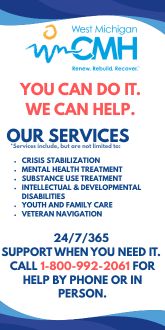 Governor declares state of emergency.
Governor declares state of emergency.
LANSING – Gov. Gretchen Whitmer signed and filed an order with the Secretary of State declaring a state of emergency in Michigan to help address threats to public health and safety due to sub-zero temperatures over the next few days.
“Keeping Michiganders safe during this stretch of dangerously cold temperatures is our priority,” said Whitmer. “Such widespread, extreme conditions have not occurred in Michigan for many years, and it is imperative that we are proactive with record-low temperatures being predicted by the National Weather Service. Wind chills are predicted as low as 50 degrees below zero in many places, such as metro Detroit which is especially unaccustomed to these temps.”
“With a winter storm impacting much of the Lower Peninsula and statewide, temperatures forecast to hover around 0 degrees with wind chills at 50 below or colder in some areas, the state is actively working with local communities and emergency management partners to ensure they have all the resources they need to respond, states www.michigan.gov. “Conditions and needs will be continually assessed, and appropriate action will be taken as warranted to protect public health and safety.”
In addition to the emergency declaration, Whitmer has activated the State Emergency Operations Center (SEOC). Located at Michigan State Police (MSP) Headquarters in Dimondale, the center is overseen by the Michigan State Police, Emergency Management and Homeland Security Division (MSP/EMHSD) and coordinates response and recovery efforts by state agencies and local government.
The SEOC is staffed by members of state agencies and other partners for decision making and information coordination during disasters or emergencies in the State of Michigan.
Safety tips to stay safe during cold weather:
-Limit your time outside. If you need to go outside, wear layers of warm clothing. Watch for signs of frostbite and hypothermia.
– Signs of frostbite include: loss of feeling and color around the face, fingers and toes, numbness, white or grayish-yellow skin, firm or waxy skin.
– Signs of hypothermia include: shivering, exhaustion, confusion, fumbling hands, memory loss, slurred speech or drowsiness.
– Avoid carbon monoxide poisoning. Only use generators and grills outdoors and away from windows. Never heat your home with a gas stovetop or oven.
– Reduce the risk of a heart attack. Avoid overexertion when shoveling snow.
– Check on neighbors. Older adults and young children are more at risk in extreme cold.
– Pets are also at risk for cold weather injuries and should be kept indoors.
– If travel is necessary, keep a full tank of gas and an emergency preparedness kit in your vehicle. Put warm clothing, such as gloves, blankets and hats, and a cell phone charger in your kit.
To prevent frozen pipes:
– Keep garage doors closed if there are water supply lines in the garage.
– Open kitchen and bathroom cabinet doors to allow warmer air to circulate around the plumbing. Be sure to move any harmful cleaners and household chemicals up out of the reach of children.
When the weather is very cold outside, let the cold-water drip from the faucet served by exposed pipes. Running water through the pipe – even at a trickle – helps prevent pipes from freezing.
– Keep the thermostat set to the same temperature both during the day and at night. By temporarily suspending the use of lower nighttime temperatures, you may incur a higher heating bill, but you can prevent a costlier repair job if pipes freeze and burst.
– If you will be going away during cold weather, leave the heat on in your home, set to a temperature no lower than 55° F.
To thaw frozen pipes:
– If you turn on a faucet and only a trickle comes out, suspect a frozen pipe. Likely places for frozen pipes include against exterior walls or where your water service enters your home through the foundation.
– Keep the faucet open. As you treat the frozen pipe and the frozen area begins to melt, water will begin to flow through the frozen area. Running water through the pipe will help melt ice in the pipe.
– Apply heat to the section of pipe using an electric heating pad wrapped around the pipe, an electric hair dryer, a portable space heater (kept away from flammable materials), or by wrapping pipes with towels soaked in hot water. Do not use a blowtorch, kerosene or propane heater, charcoal stove, or other open flame device.
– Apply heat until full water pressure is restored. If you are unable to locate the frozen area, if the frozen area is not accessible, or if you cannot thaw the pipe, call a licensed plumber.
– Residents who need assistance or guidance during the extreme cold are encouraged to call 211.
– Michigan weather is unpredictable any time of year, but especially during the winter months. If you are stranded, do not leave your vehicle. Stay with the vehicle and wait for help.
– Motorists are encouraged to check travel conditions and weather reports before driving at www.michigan.gov/roadconditions. Major road closures can be found at www.michigan.gov/drive. The MSP/EMHSD asks that you tune into local news and/or view these websites rather than calling your local MSP post or 911 for travel conditions.
– For more information on how to prepare before, during and after an emergency or disaster, visit www.michigan.gov/miready or follow MSP/EMHSD on Twitter at @MichEMHS.












































.png)

